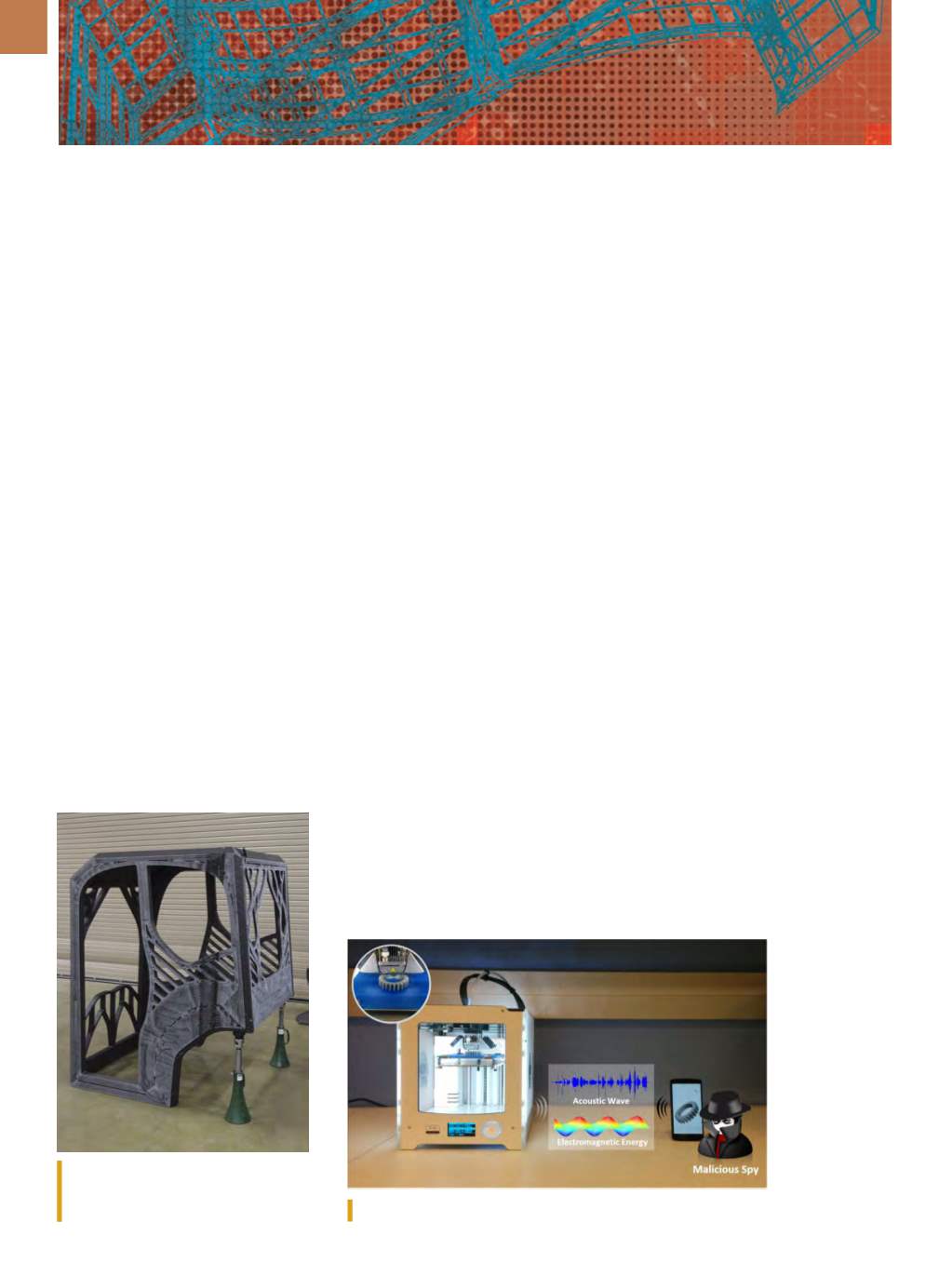

8 0
A D V A N C E D M A T E R I A L S & P R O C E S S E S | N O V E M B E R / D E C E M B E R 2 0 1 6
3D PRINTSHOP
DIGGING UP A NEW
ADDITITVE APPLICATION
Scientists at Oak Ridge National
Laboratory (ORNL), Tenn., are design-
ing and producing the world’s first
3D-printed excavator, a prototype that
will leverage large-scale additive manu-
facturing (AM) technologies and explore
the feasibility of printing with metal
alloys. The scientists are collaborating
with industry partners and student engi-
neers from the University of Illinois at
Urbana-Champaign who won a design
competition for the project. Three exca-
vator components will be printed at
the DOE’s Manufacturing Demonstra-
tion Facility at ORNL: the cab, the stick
(a large hydraulically articulated arm),
and a heat exchanger. The stick will be
fabricated with the Wolf System using
a freeform technique for printing large-
scale metal components, and the heat
exchanger will be printed on a Concept
Lasermachine that producesmetal parts
through a powder-bed-based laser melt-
ing process. During the nine-month fab-
rication and assembly period, the team
aims to develop processes to improve
3D-printed excavator made of carbon
fiber-reinforced ABS plastic. Courtesy of
ORNL.
material performance and printability
and validate models to reduce residual
stress and distortion.
ornl.gov.
3D PRINTERS VULNERABLE
TO SMARTPHONE SPIES
Researchers at the University of
Buffalo, N.Y., discovered that 3D printers
can be hacked with a common smart-
phone, threatening intellectual property.
While many 3D printers have security
features such as encryption and water-
marks designed to foil cyberattacks,
the Buffalo team sidestepped those
safeguards and programmed a smart-
phone’s built-in sensors to measure the
machine’s electromagnetic energy and
acoustic waves, which allowed them to
map the print nozzle’s movements as
it printed. The phone, held 20 cm from
the printer, gathered enough data to
replicate a simple object with 94% accu-
racy. For complex objects such as an
automotive part, the accuracy rate was
still above 90%. To counter this vulnera-
bility, researchers suggest several ways
to make 3D printers more secure: Put
a moat around the printer because the
ability to obtain accurate data for sim-
ple objects diminished to 87% at 30 cm
and 66% at 40 cm; or increase the print
speed—emerging materials may enable
faster printing, reducing the ability to
track the print nozzle. Other options
include using software and hard-
ware-based solutions to program the
printer to operate at different speeds or
installing acoustic and electromagnetic
shields.
buffalo.edu.
COMING TOGETHER IN
COLORADO
A public-private partnership has
been established to advance AM meth-
ods for Nitinol, a nickel-titanium alloy
increasingly used in the medical indus-
try. The Colorado School of Mines, Con-
fluent Medical Technologies, and the
Development of Additive Processing
Technologies (ADAPT) program will join
forces to optimize the superelastic prop-
erties of AM-synthesized Nitinol, which
exhibits unique shape memory proper-
ties in addition to being superelastic.
“Over the next few years, we expect
additive manufacturing technologies
to have a profound effect on the med-
ical device industry,” says Tom Duerig,
founder of Confluent, a contract manu-
facturer of Nitinol-basedmedical devices.
As part of the collaboration, the com-
pany established the Confluent Medical
Postdoctoral Fellowship at the School of
Mineswith an initial $100,000 gift. In addi-
tion, a full-time postdoctoral researcher
was hired for the project by ADAPT, a new
R&D consortium dedicated to develop-
ing next-generation data informatics and
advanced characterization technologies
for AM.
mines.edu, confluentmedical.com,
inside.mines.edu/ADAPT-Home.
Illustration of a smartphone hacking a 3D printer.


















